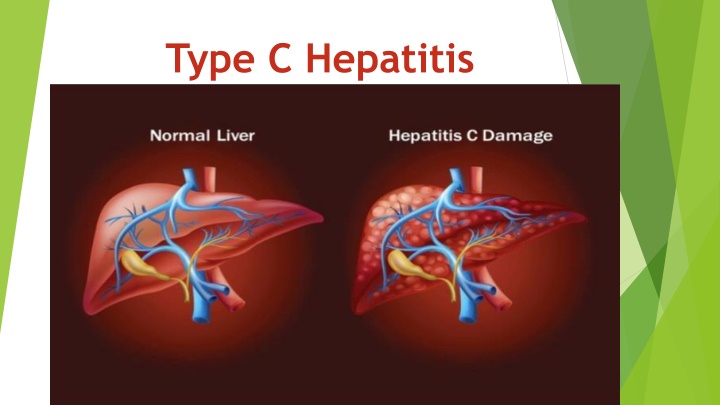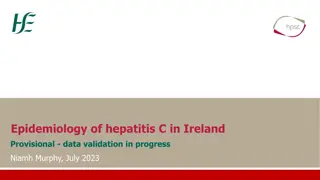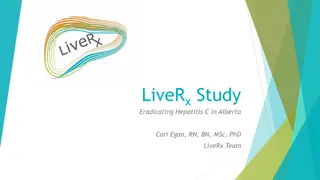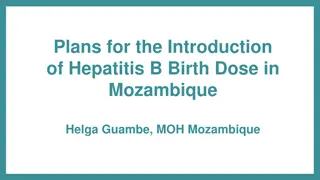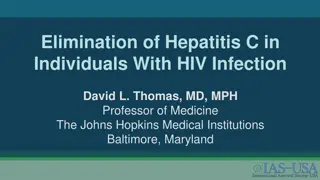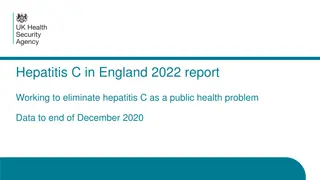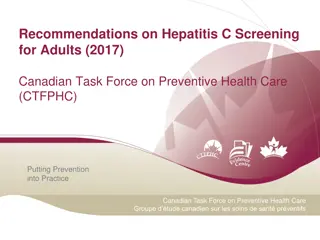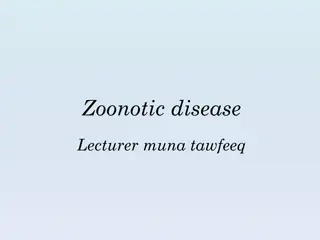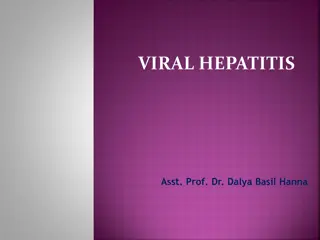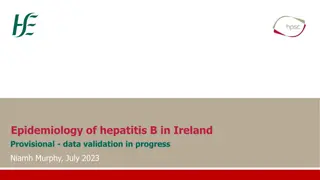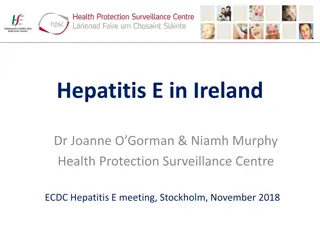Type C Hepatitis
Hepatitis C is a liver disease caused by the Hepatitis C virus, leading to acute and chronic hepatitis. Learn about its causal agent, epidemiology, transmission modes, pathogenesis, clinical features, and more.
Download Presentation

Please find below an Image/Link to download the presentation.
The content on the website is provided AS IS for your information and personal use only. It may not be sold, licensed, or shared on other websites without obtaining consent from the author.If you encounter any issues during the download, it is possible that the publisher has removed the file from their server.
You are allowed to download the files provided on this website for personal or commercial use, subject to the condition that they are used lawfully. All files are the property of their respective owners.
The content on the website is provided AS IS for your information and personal use only. It may not be sold, licensed, or shared on other websites without obtaining consent from the author.
E N D
Presentation Transcript
Content INTRODUCTION DEFINITION CAUSAL AGENT EPIDEMIOLOGY TRANSMISSION PATHOGENESIS LIFE CYCLE CLINICAL FEATURES LABORATORY DIAGNOSIS PROPHYLAXIS TREATMENT
INTRODUCTION Attempts to identify the group of non- A non-B viruses by experimental infection in chimpanzees led to the discovery of hepatitis C virus (HCV). It is a main cause of HCV liver cancer.
Definition Hepatitis C is a liver disease caused by hepatitis C virus. It can cause both acute and chronic hepatitis.
CAUSAL AGENT- Hepatitis C Virus Size -: HCV is a 50-60nm virus Genetic material-: linear single stranded RNA genome Core-: Genome enclosed within a core.it is made up of protein. Nucleocapsid-:The capsid or core with the enclosed nucleic acid is known as nucleocapsid. Envelope-: Envelope made up of glycoproteins E1 and E2 It is involved in viral attachment and entry into the cell Lipid membrane -: It is derived from host. Fig. Structure of HCV
EPIDEMIOLOGY Hepatitis C occurs worldwide. Host-: human Source of infection-: carriers High risk of infection-: 1)injectable drug abusers 2)transplant recipients 3)immunocompromised persons
TRANSMISSION Blood transfusion Contact with infected blood or blood product Sexual transmission is less important From mother to baby It is not spread through breast milk,food, water or casual contact.
PATHOGENESIS HCV Enters into liver Replicate in hepatocytes Persistence of the infection leads to chronic hepatitis and hepatocellular carcinoma
CLINICAL FEATURES Fever, fatigue, decreased appetite, nausea, vomiting, abdominal pain, dark urine, grey coloured feces,joint pain,jaundice etc.
Laboratory diagnosis Serological test-:The standard method of diagnosis is antibody detection by ELISA. Nucleic acid test-:Identification of HCV RNA in blood provides more sensitive and specific results within a few days of exposure to HCV. Molecular method-:PCR and branched DNA assay
Prophylaxis General prophylaxis 1. Safe and appropriate use of health care injection 2. Blood screening 3. Hygiene 4. Health education Specific prophylaxis No specific active and passive immunizing agent is available
Treatment Prolonged treatment with interferon alpha,either alone or in combination with antiviral agents like ribavirin has been reported to be useful in some cases. Therapy-:Recommended by WHO is pan-genotypic direct-acting antivirals(DAAs)
References Medical Microbiology by Anantnarayan https: //www.hepatitisc.uw.edu https: //www.sciencedirect.com https: ://www.researchgate.net https: //www.webmd.com https: //www.who.int
